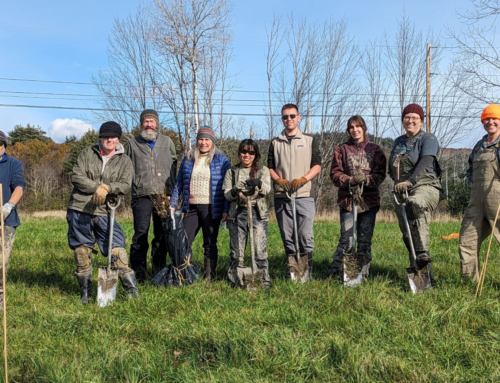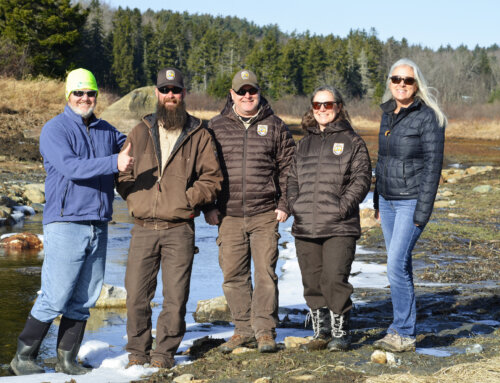South Newfane, Vermont, September 01, 2014. The Connecticut River Valley was once home to the passenger pigeon, the most abundant denizen the area has ever known. Feeding and nesting in the millions, the slender, beautiful bird made its home in the river valley, feasting on nuts from the massive oaks, chestnuts, hickory, walnut and beech trees that once dominated the land.
The passenger pigeon was a far cry from the stocky, persistent street pigeon that frequents city parks and buildings. Slimmer and more colorful than a rock pigeon, it sported a long pointed tail, reddish breast and pink-tinged throat. It did not coo, but rather, clucked, chattered and even shrieked.
To roost and nest, passenger pigeons gathered on trees in colonies that could contain a million birds or more. They were literally nesting cities, the birds cramming hastily built nests into any available space. A big oak tree could support hundreds of nests.
Passenger pigeons ranged along the eastern half of North America. They were migratory, as their scientific name, Ectopistes migratorius, suggests, flying south in the fall, north in the spring. While nuts were their favorite food, especially acorns and beechnuts, the birds also gorged on fruit, berries and cultivated crops—plentiful fare in the fertile terraces along the river and its tributaries. Twice a year, huge columns of pigeons flew overhead at speeds reaching 60 miles per hour, in search of food. Early accounts speak of these miles-long, thunderous flocks blocking out the sun for hours, even days.
Many historical references point to the profusion of passenger pigeons in the Connecticut River Valley. In the 1600s, the Abenaki made permanent homes along the river, farming, hunting and fishing. During spring and fall, they relied on migratory waterfowl and passenger pigeons as a major food supply.
When Europeans began to settle the river valley, travelers described the incredulous flocks of passenger pigeons. But even in the mid-1700s, journal entries forewarned of population declines. Richard Hazen, who surveyed the Province line, (the boundary between New Hampshire and Massachusetts) in 1741, remarked in his journal: “For three miles together, the pigeons’ nests were so thick, that five hundred might have been told on the beech trees at one time; and could they have been counted on the hemlocks, as well, I doubt not by five thousand, at one turn around. This was on the western side of the Connecticut River, and eastward of Deerfield River. Since the clearing of the woods, the number of pigeons is diminished.”
In 1797, Yale College President, Timothy Dwight, traveled through the Connecticut River Valley, from Middleton, Connecticut, north. Although forests of the lower valley were already heavily cut, he noted in his journals, the steeper mountains and much of the upper valley were still buried in forests with many tall trees. He observed that turkey, partridges, quail, and passenger pigeons, waterfowl and fish were plenty. However, he suggested that New England was changing, even as he traveled, the most pronounced being the “conversion of a wilderness into a desirable residence for man.”
By the mid-1800s passenger pigeon observers such as Reverend Hosea Beckley in his History of Vermont, (Brattleboro, 1846) included more dire warnings: “In the early settlement of the state, wild pigeons were wonderfully plenty. So few are now found in the forests and on the mountains, that the account given by the first settlers of their numbers and multiplication seems almost incredible…the progress of civilization and refinement; and the clearing of the hills and vallies have much lessened the number of these birds, or driven them to other regions.”
By the turn of the 19th century, the expansive forests that covered the Connecticut River Valley had dwindled, with more than half of the land used for farms and pastures. Besides forest clearing, which eliminated their habitat, passenger pigeons were hunted mercilessly with just about anything—nets, guns, poles, smoke, traps, even cannons. At roosting or nesting sites, thousands could be taken in a few hours. Metropolitan appetites produced a voracious market for the tasty pigeons, and trainloads of dead birds were hurried from eastern forests to cities via refrigerated cars.
The mid to late 1800s saw a catastrophic decline in populations of passenger pigeons. Destroyed habitat from logging and settlement, together with heavy hunting, led to their demise in just a few decades.
This year marks the 100th anniversary of the death of Martha, the last passenger pigeon, who died at the Cincinnati Zoo on September 1, 1914, at 1 pm. She perhaps represented the only species for which the exact minute of extinction is known.
Learn more about the many ways passenger pigeons are being remembered this year at: passengerpigeon.org and foldtheflock.org
Elizabeth Macalaster is a CRC member and writer from South Newfane, VT. She is currently working on a book about the role of homing pigeons in the U.S. Navy.
SOURCES:
Our Plural History, Springfield, MA. ourpluralhistory.stcc.edu
Wright, A.H. “Early Records of the Passenger Pigeon” AUK, July, 1910
Cronon, William. Changes in the Land: Indians, Colonists, and the Ecology of New England. Hill and Wang, New York: 1983.
Crumbler, John T. Reasonable Use; the People, the Environment, and the State, New England, 1790-1930. Oxford University Press, London: 2001







